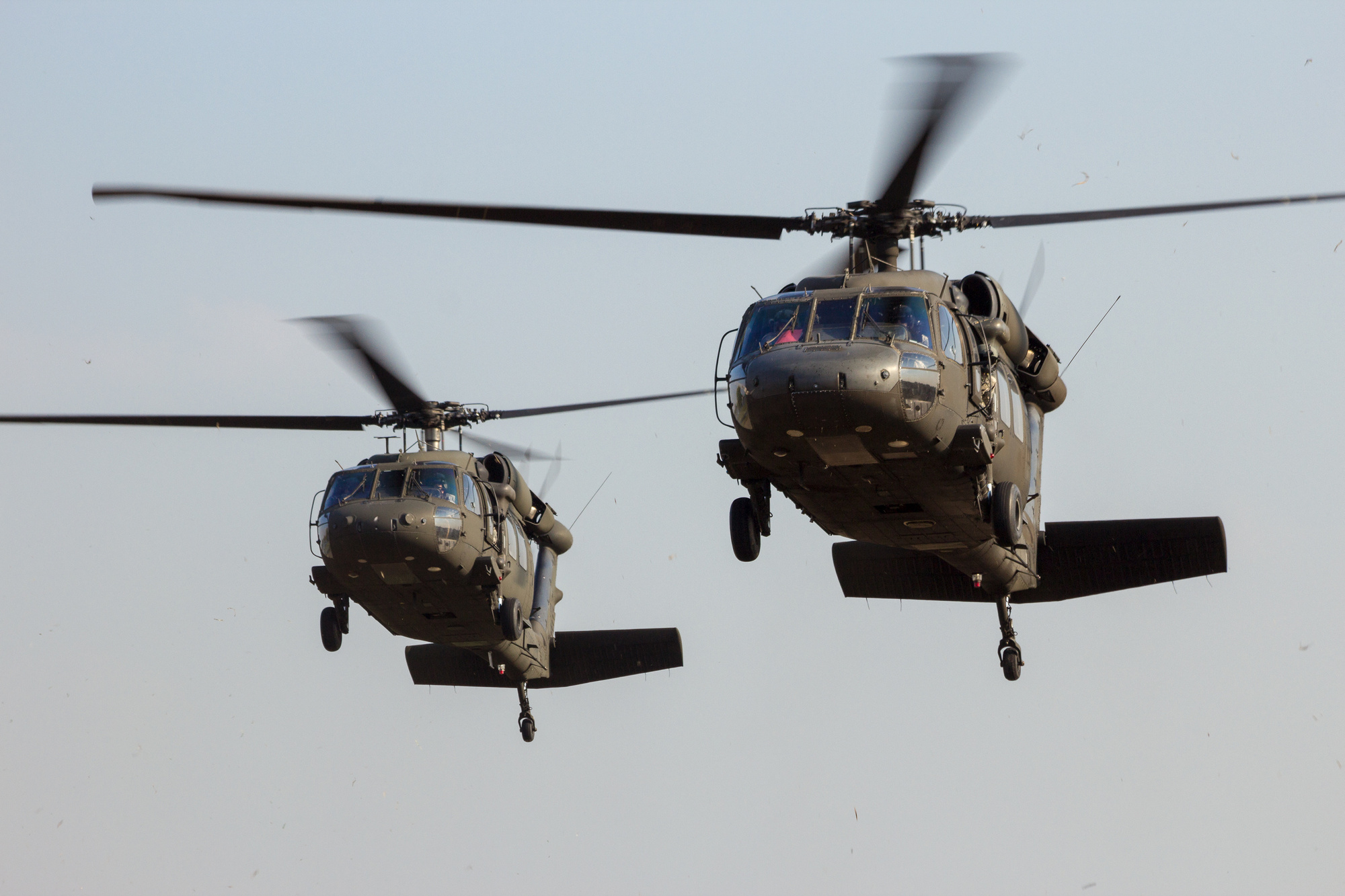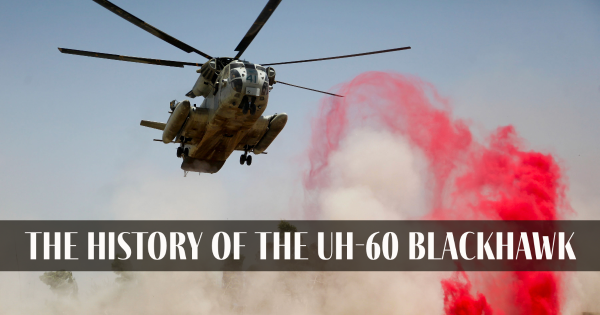Unequaled Convenience: UH-60 Blackhawk in Armed Force Operations
Wiki Article
Checking Out the Background and Development of Uh 60 Helicopters
As we delve right into the history of UH-60 helicopters, we reveal not just a timeline of innovations however additionally the critical duty they have played in forming modern warfare. Join us as we reveal the interesting tale behind the UH-60 helicopters and explore the effect they proceed to have on armed forces approaches and operations worldwide.Very Early Beginnings and Development
The very early beginnings and development of the Uh-60 helicopters can be traced back to the demand for a versatile and reliable aircraft for different army operations. In the late 1960s, the United States Military identified the limitations of existing helicopters and started the Energy Tactical Transportation Airplane System (UTTAS) program to develop a new generation of energy helicopters. This program intended to resolve the shortcomings of older helicopter models by integrating innovative technologies and enhanced performance abilities.
Introduction of the UH-60 Black Hawk
With the UH-60 Black Hawk's entrance right into service, a brand-new period in military air travel dawned, noting a considerable advancement in abilities and convenience for the United States Army. Presented in 1979, the UH-60 Black Hawk was designed as a multi-mission helicopter to replace the aging fleet of UH-1 Iroquois helicopters. The Black Hawk's sophisticated attributes, including twin engines for boosted power and survivability, a four-blade major rotor system for enhanced lift performance, and a sizable cabin efficient in accommodating as much as 11 completely equipped troops, reinvented the Military's air attack and energy capabilities.The UH-60 Black Hawk rapidly verified its well worth in a selection of missions, from troop transport and medical emptying to unique procedures and search and rescue. Its convenience and reliability were further demonstrated during Procedure Urgent Fury in Grenada in 1983 and the invasion of Panama in 1989. The Black Hawk's success resulted in its extensive fostering not only by the U.S. Army however likewise by numerous other military forces and government companies worldwide.

Technological Improvements For Many Years
Throughout the advancement of the UH-60 Black Hawk helicopters, substantial technical innovations have actually continuously boosted their efficiency and abilities. Among the essential improvements is the combination of sophisticated avionics systems, including digital cabins with multifunction display screens, trip administration systems, and advanced interaction systems. These renovations have not just enhanced the situational awareness of the crew yet have additionally streamlined the overall procedure of the airplane.
Additionally, the adoption of more powerful engines has significantly enhanced the UH-60 Black Hawk's lift, rate, and maneuverability capability. The most recent versions are equipped with extra reliable turboshaft engines that supply higher power output while maintaining gas effectiveness.
Function of UH-60 in Military Procedures
Having actually gone through considerable technological advancements throughout the years, the UH-60 Black Hawk helicopters play a vital function in various army operations due to their versatility and integrity. These helicopters are commonly used for goals such as troop transport, clinical evacuation, air attack, and special procedures. The UH-60 is especially valued for its ability to run in diverse atmospheres, ranging from complicated urban setups to rugged surfaces, offering army forces with a very adaptable airborne platform.
Among the key toughness of the UH-60 is its capacity for quick deployment and removal of troops in battle zones, improving functional efficiency and adaptability for military commanders. In addition, its robust building and construction and advanced avionics systems contribute to its performance in challenging problems, ensuring objective success also in aggressive environments. The UH-60's function in sustaining ground forces, carrying out reconnaissance missions, and supplying logistical support further emphasizes its value in modern-day military operations. Generally, the UH-60 Black Hawk helicopters proceed to be important properties for armed forces around the globe, enabling them to accomplish their purposes with accuracy and effectiveness.
Modern Applications and Future Potential Customers
In the modern landscape of armed forces procedures, the This Site UH-60 Black Hawk helicopters proceed to demonstrate their versatility and calculated relevance with sophisticated technologies and evolving mission capabilities. One of the key modern applications of the UH-60 is its essential role in medical evacuation missions, where its versatility and rate contribute in promptly transporting injured personnel from the combat zone to clinical facilities. Additionally, the UH-60's advanced avionics systems and boosted ability to move make it go to this site a useful possession in special procedures, consisting of insertion and extraction of special pressures in aggressive atmospheres.Looking towards the future, the UH-60 system is poised to undergo more advancements to boost its abilities. Future prospects for the UH-60 consist of the integration of autonomous trip technologies to boost operational performance and minimize human error. In addition, advancements in materials scientific research and propulsion systems may bring about enhancements in the helicopter's performance, haul, and variety capacity, ensuring its ongoing significance in modern-day warfare circumstances. As armed forces needs develop, the UH-60 Black Hawk helicopters are anticipated to adapt and innovate to meet the difficulties of tomorrow's functional environments.
Verdict
Finally, the background and advancement of UH-60 helicopters have been marked by substantial improvements in innovation and their vital duty in army procedures. From their very early beginnings to their modern-day applications, these helicopters have actually continuously adjusted to meet the changing needs of the armed force - uh-60 blackhawk. With ongoing advancements in technology, the future leads for UH-60 helicopters continue to be encouraging as they proceed to play an essential duty in numerous army objectivesSikorsky Airplane Company, a distinguished helicopter maker, responded to the UTTAS program's demands by developing the UH-60 Black Hawk helicopter. Introduced in 1979, the UH-60 Black Hawk was designed as a multi-mission helicopter to replace the aging fleet of UH-1 Iroquois helicopters.Having actually undertaken considerable technological developments over the years, the UH-60 Black Hawk helicopters play a vital role in numerous armed forces operations due to their versatility and integrity.In the modern landscape of armed forces operations, the UH-60 Black Hawk helicopters proceed to show their adaptability and strategic value via innovative technologies and evolving objective capabilities. As army demands develop, the UH-60 Black Hawk helicopters are expected to adjust and innovate to meet the obstacles of tomorrow's operational environments.
Report this wiki page